Josefov is the Jewish quarter in Prague. It is located on the right bank of the Vltava River, near the Old Town Square, and is completely surrounded by the buildings of the Old Town.
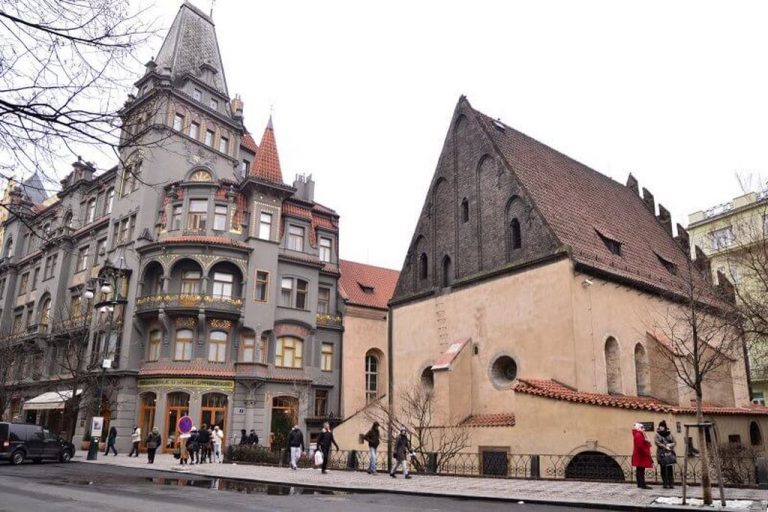
The Jewish Quarter (Židovskéměsto) appeared in Prague in the 11th century. Now it is located almost in the center of the city, and then it was the farthest outskirts. Jews had the right to settle only there, and, in fact, it was completely powerless, experiencing frequent anti-Jewish pogroms, the Prague ghetto.
In 1850, Emperor Joseph II issued a decree equalizing the rights of Jews and Christians. The ghetto was officially considered one of the quarters of Prague.
Interesting! The name “Josephs” comes from the name of Emperor Joseph II.
At the turn of the nineteenth and twentieth centuries, especially between 1893 and 1913, part of the Jewish quarter was destroyed due to the redevelopment of Prague. As the old buildings were demolished, and mainly Czechs settled in the new ones, the number of Jews in Josefov decreased. By the beginning of the 20th century, only poor Jewish families and families of ultra-Orthodox Jews who preserved ancient traditions remained here.
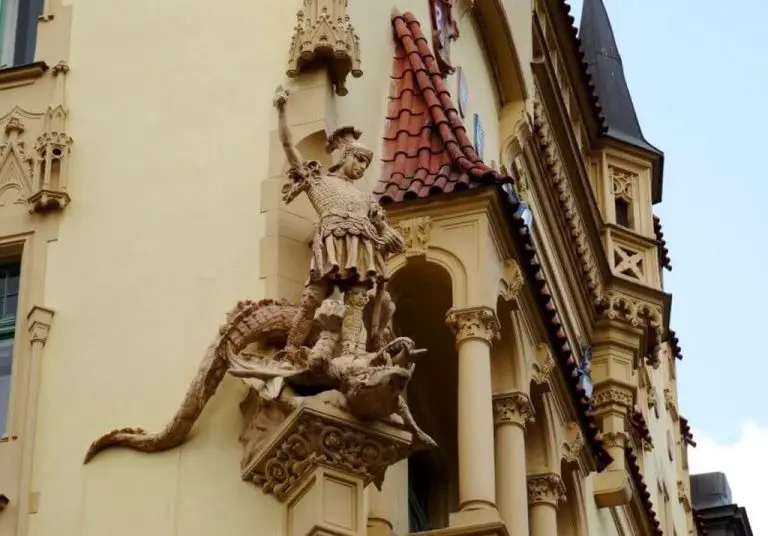
Now the Jewish Quarter is the smallest land and cadastral unit of Prague, its total area of only 8.81 hectares. The center of the block is called “Broad Street”, but most of the streets here are so narrow that you can simultaneously touch houses standing on opposite sides of the houses. Despite its small size, Josefov is a unique open-air museum complex, on the territory of which is located the largest Jewish museum in Europe.
How to find the Jewish Quarter in Prague
There are several options for how to get to the Jewish quarter in Prague:
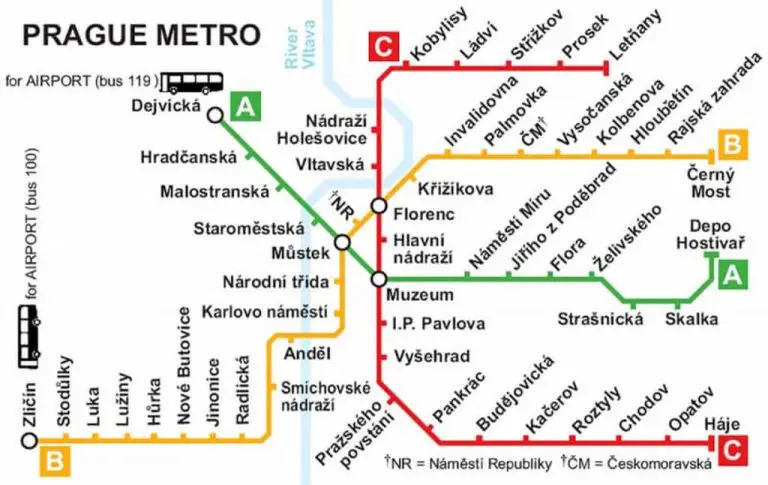
- metro (green line A) – Staroměstská station;
- bus No. 194, 207 – stop Pařížská, to the right of the Spanish synagogue;
- tram number 17, 18 – stop Právnická fakulta.
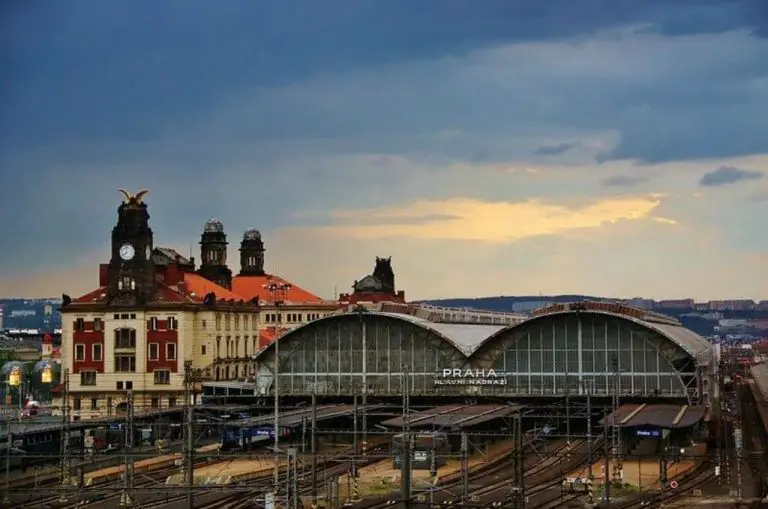
- from the main railway station in Prague – less than half an hour;
- from Old Town Square – 5 minutes;
- from Charles Bridge – 10 minutes.
The Jewish quarter is quite small and all its attractions are located within walking distance from each other.
Josefov on the map of Prague. Here you can build a route to the quarter from anywhere in the city.
State Jewish Museum
The expositions of the Jewish Museum (Zidovske museum) are located in several synagogues: Mayselova, Spanish, Pinkasova, Klausova. The museum also includes such sights of the Jewish quarter in Prague: the Ceremonial Hall, the Old Jewish Cemetery and the Robert Guttman Gallery.
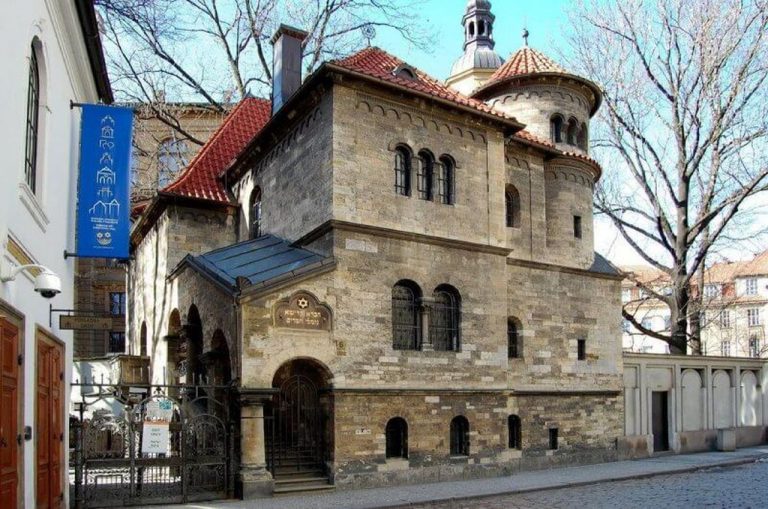
The Pinkas Synagogue was built at the beginning of the 16th century; it is one of the two oldest synagogues in Prague. Now it hosts an exhibition telling about Jewish children who were imprisoned in the Terezinsky ghetto during World War II.
In the synagogue of Maiselov (Meisel), the exhibition “Jews in Czech Lands, the X-XVIII Century” is presented. The highlight of the exposition is an audio-visual 2D projection that takes visitors to the streets of the old Jewish city.
The theme of the exhibition, located in the gallery of Robert Guttman: Jewish monuments in the Czech Republic, the persecution of Czech Jews during the Second World War, the Jewish presence in contemporary art.
Read about what you can see in other synagogues, about the Staroyevreysky cemetery, as well as about the monuments of Prague that are not part of the museum.
Practical information
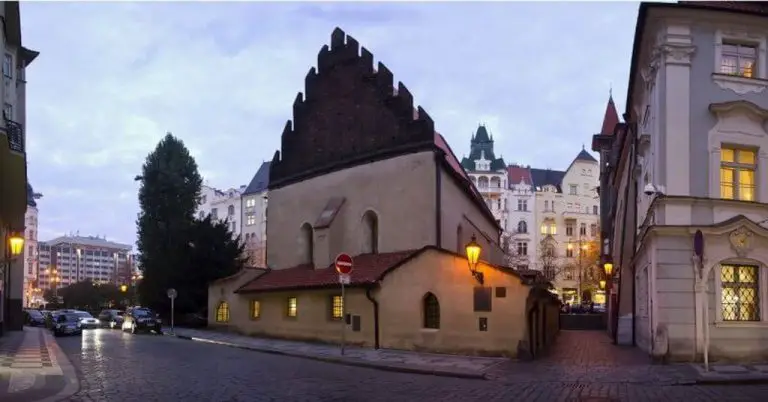
Tickets are of 3 types (children under 6 years old are allowed for free on any route):
It gives the right to visit only the Staronova synagogue (they don’t sell individual tickets to any synagogue related to the Jewish Museum). Price in crowns:
- for adults – 200;
- for schoolchildren and students from 6 to 26 years old – 140;
- family (1 adult, maximum 4 children) – for an adult 200, for each child 100.
Allows access to the Spanish, Mayzelova, Pinkasova and Klausova synagogues, the Ceremonial Hall, the Old Jewish Cemetery and the Robert Guttman Gallery. Price in crowns:
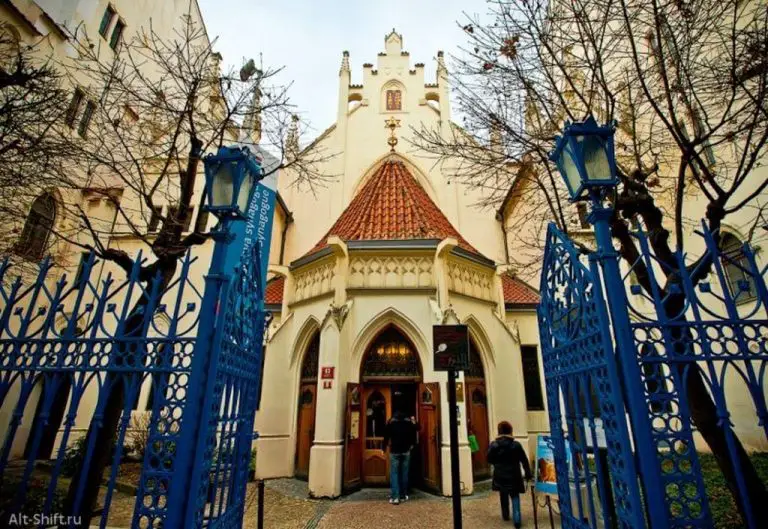
- for adults – 350;
- for pupils and students – 250;
- family ticket – for an adult 359, for each child 100.
Allows you to see absolutely all the objects of the State Jewish Museum. Price in crowns:
- for adults – 530;
- for schoolchildren and students – 350;
- family ticket – for an adult 500, for each child 160.
Tickets are valid for 7 days, but each object can be visited only once.
They don’t sell tickets in synagogues! You can buy them only at the box office of the museum, in the Information Center (15 Maiselova Street, Prague 1) or on the official website of the museum (https://www.jewishmuseum.cz/).
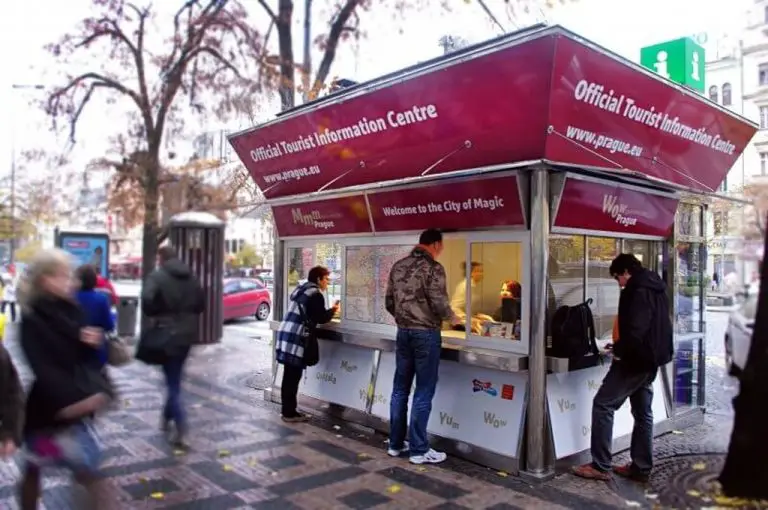
At the box office and the information center, you can also take a free map of Prague, which shows the Jewish Quarter and all its attractions. In the same place, for the duration of the ticket, they offer an audio guide for rent (available in Russian): 250 kroons for adults, 200 kroons for schoolchildren and students.
Advice! You can get an audio guide with a 30% discount if you download The Prague Jewish Town app on your phone in advance. Although the application does not start with Android (it gives an error), it is on the phone and they will make a discount.
The State Jewish Museum and all its objects are open every day, with the exception of Saturday and other Jewish holidays. Time varies depending on the season:
- January-March and November-December – from 9:00 to 16.30;
- April-October – from 9:00 to 18:00;
Museum address: U Staré školy 3, 110 00, Prague 1.
Spanish synagogue
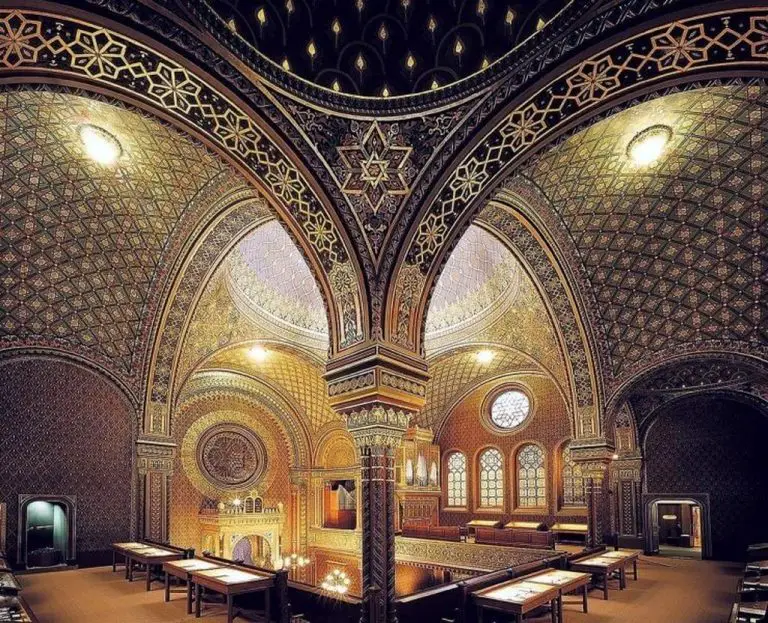
The Spanish Synagogue is the youngest religious building in the Jewish Quarter. It was built in 1868 on the site where the oldest Jewish prayer house “Old Shul” used to be.
In 1941, the building was used by the Nazis as a warehouse, and after the war it was abandoned. By 1986, it was in a very poor state, and a large-scale reconstruction was carried out in it. Now in the synagogue permanent exhibitions of the museum are shown, chamber music concerts are often organized, obligatory evening masses are held every Friday, and by appointment even weddings are held in accordance with Jewish traditions.
Interesting fact! Since 1836, Frantisek Shkroup has been the choirmaster of the Spanish synagogue. This is a famous Czech composer who wrote the music of the national anthem.
The architectural composition of the synagogue is completely atypical for traditional Jewish culture. Its eclectic appearance mainly involves elements of a graceful Moorish style, and the dome located in the center emphasizes the particular greatness of the building.
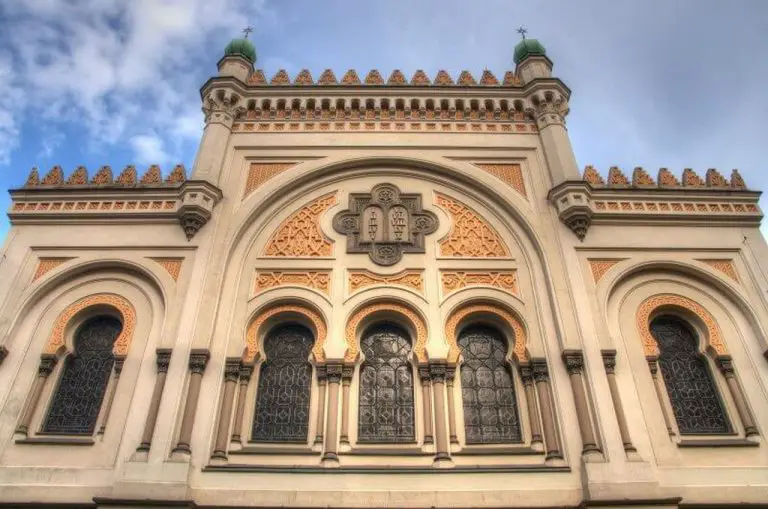
The interior of the Spanish synagogue is extremely harmonious; it impresses with unprecedented luxury and exquisite detail. Walls, arches and arches are painted with geometric and floral patterns, designed in the style of Moorish and Jewish motifs. For painting, mainly red and green colors were used, a lot of bright gilding. The eastern wall is decorated with a stained-glass window, made in the shape of a six-pointed Star of David, and underneath is the traditional “Torah Ark”. On the south side are the organ pipes. Galleries and the female part are arranged along three walls on metal frames and completely cover the nave. Places for parishioners are not made as they usually are in synagogues – they are installed in rows.
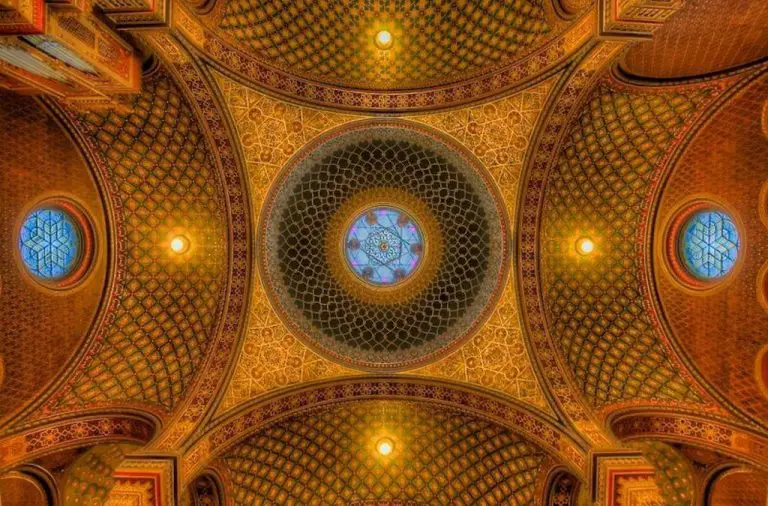
In the Spanish synagogue in Prague there are two permanent exhibitions of the Jewish Museum:
- The history of Jews in the Czech Republic in the XIX-XX centuries. The exhibits will tell about Czech-Jewish scholars, writers, musicians and artists (Franz Kafka, Sigmund Freud, Gustav Mahler), describe the reconstruction of the Jewish quarter in Prague. Particular attention is paid to the life of Jews in the years 1939-1945 and the Terezinsky ghetto.
- Silver of Czech synagogues. The exhibition features more than 200 valuable silverware related to the history of Judaism. Most of the items are decorations of the Torah, many cult things (Hanukkah, sets for washing hands).
Address of the Spanish Synagogue: Vězeňská 1, 110 00 Prague 1.
Important! Since May 31, 2019, the Spanish synagogue is closed for modernization. It organizes a new permanent exhibition containing interactive elements. It is planned that the attraction will be open to visitors in the last quarter of 2020.
Franz Kafka Monument
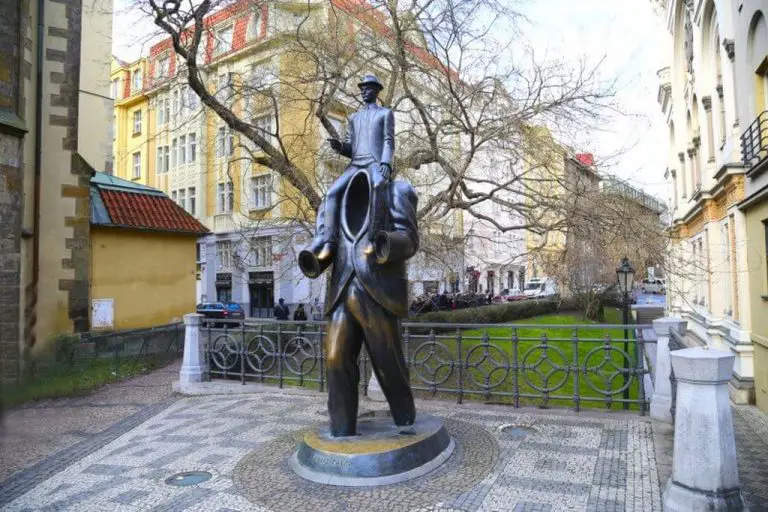
Near the Spanish synagogue is a monument to Kafke, which was included in the TOP 10 of the most extravagant monuments in the world.
A man resembling a writer sits on the shoulders of a large suit, ankle-deep in a pedestal. With his abstract creation, the sculptor was able to vividly convey all the anxiety and absolute illogic of the extraordinary works of Kafka.
The height of this unusual bronze composition is 3.75 m, weight 700 kg, and it was created by sculptor J. Ron in 2003.
Klausova synagogue
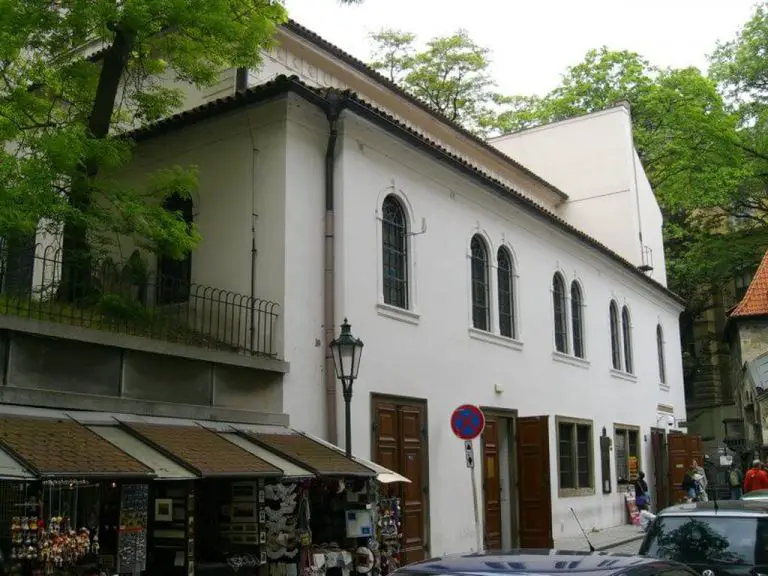
The Klaus synagogue was built on the site of three ritual buildings that burned down in the 16th century. Unlike other synagogues, it has only one floor. Nevertheless, this building cannot be called “stunted”: inside it is very spacious, and high arches give it special majesty. The appearance of the building has remained unchanged since 1880.
Now Klausova synagogue is used only as an exhibition hall: there is a permanent exhibition “Jewish Holidays, Traditions and Customs”. Part of the gallery introduces ancient manuscripts, Torah scrolls, ritual accessories. Household items, clothing, and other exhibits reflecting the daily life of Jewish families are also presented.
The Klausova Synagogue is located at U Starého hřbitova 3a, 110 00, Prague 1. Nearby is the entrance to the Jewish cemetery.
Old Jewish cemetery
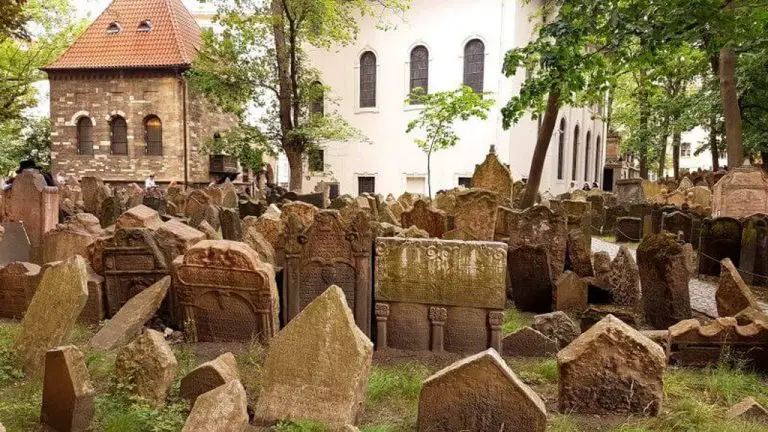
Located in the Josefov quarter, the cemetery is one of the oldest Jewish cemeteries in the world. It was founded at the beginning of the 17th century; the last burial took place at the end of the 17th century. Over the centuries, the territory of the cemetery was repeatedly expanded, but it was still not enough for the Jewish town. The problem was solved as follows: the old burial places were covered with a thick layer of earth, and the following were done in it. As a result, it turned out that the graves are located on top of each other up to 10 layers. Tombstones in the cemetery 12000.
Interesting fact! National Geographic Travel magazine has recognized the Old Jewish Cemetery in Prague as one of the 10 most interesting cemeteries in the world.
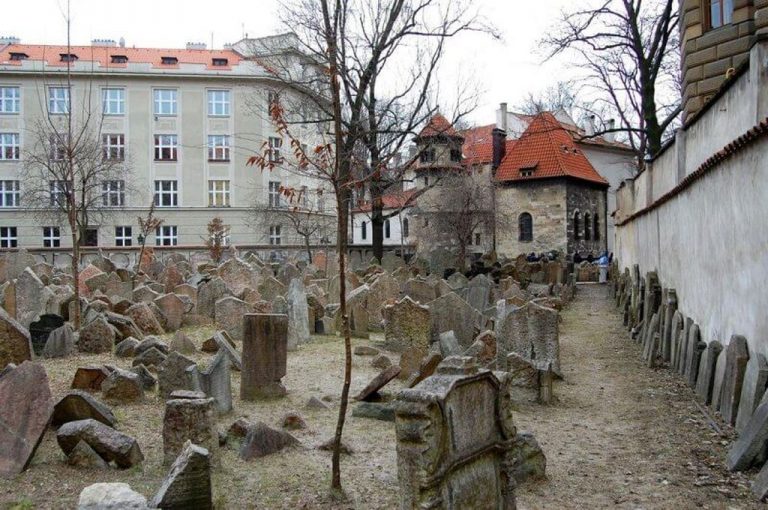
Everyone who comes here on an excursion can visit the Ceremonial Hall, which in 1908 was built on the site of the old building of the Prague funeral fraternity. The exposition is located in the hall, which is a continuation of the exposition from the Klaus synagogue. It is dedicated to the history and activities of the Prague burial society, operating in the Prague ghetto since 1564.
Address where you can find the entrance to the Old Jewish Cemetery: Široká 3, 110 00, Prague 1.
Interesting fact! Many famous people are buried in the cemetery of the Josefov quarter. There lies Rabbi Leo – it was he who, according to tradition, created the Golem. Here is the grave of the legendary Mordechai Maisel – he was born into a very poor family, got rich and provided money to the royal treasury, distributed to the poor all that was acquired and left this world, having nothing material.
Staron Synagogue
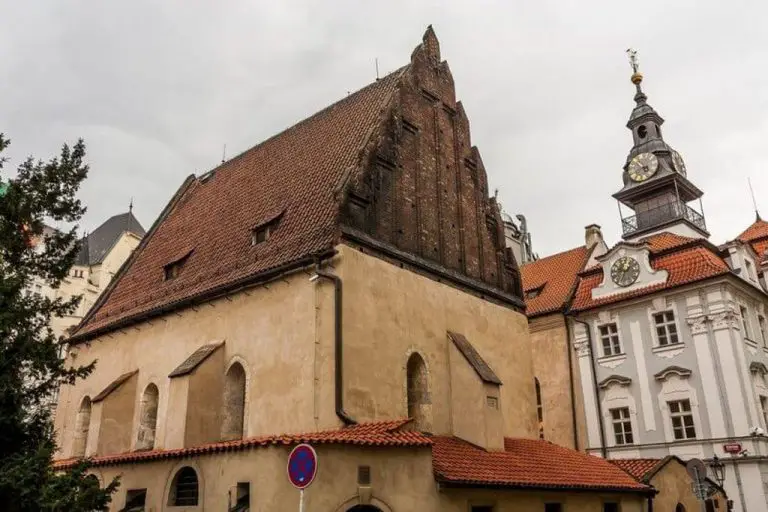
In all of central Europe, and not just in Prague, the Old-New Synagogue is the oldest surviving synagogue. It was built in the XIII century and still retains its original appearance. It was originally called New, but when other prayer houses were built in the sixteenth century, it was renamed Staronova. As before, it remains the most important religious institution of the Jewish quarter.
It is interesting! There is a legend associated with the Staron Synagogue. Rabbi Leo wanted to protect the Jews from the attacks of Christians, and as the main assistant created a huge clay Golem. The golem completely destroyed the Christian settlements. When the king found out about this, he asked the rabbi to destroy his clay warrior. But Rabbi Lyov only pacified him and hid him in the attic of the Old-fashioned synagogue. Many Jews believe that the Golem is now somewhere in this synagogue, waiting for the time when his people will need it.
Externally, the Staron Synagogue is a rather simple building with a high gable roof. Inside, everything is strict and restrained. The five-part arch is supported by two octagonal supports, between which the department is located. Along the walls there are seats – they are facing the center, where on a raised platform is a table for the Torah.
Interesting fact! The openings for the windows are made so that they are wide outside the building and taper inward. The lines of Boris Goldberg will be a very accurate explanation of such an architectural solution: “Almost twilight should be kept forever, as if curtains were drawn. And the sunlight so that he could not obscure the light of knowledge coming from the Torah … “.
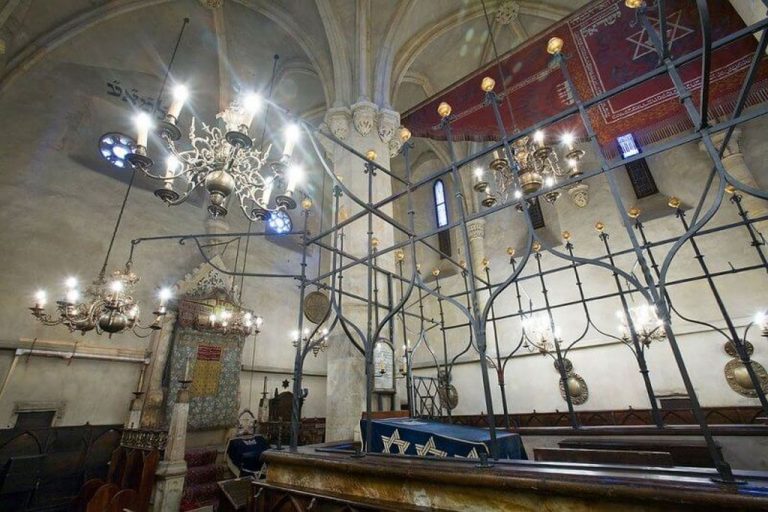
- The address where the Old-New Synagogue is located: Maiselova 18, 110 00, Prague 1.
- The time for visits is the same as the working hours of the Jewish Museum, there you need to buy a ticket.
- In the synagogue itself, you can take small information leaflets in Russian.
- Bales are also given free of charge (men must wear them in synagogues), although in other museum objects you need to pay 5 kroons for them. Taking pictures inside the synagogue is strictly forbidden.
Jewish town hall
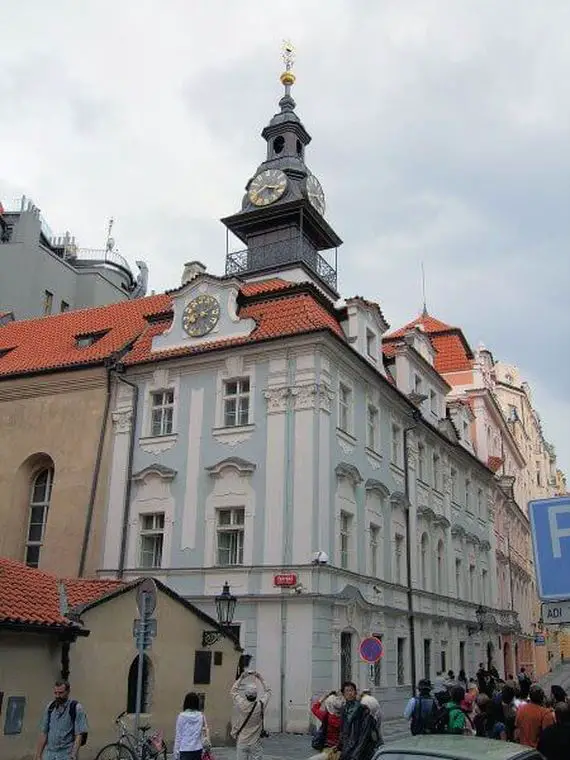
The two-story building with an attic roof, preserved in the Josef quarter from the 16th century, stands out from the surrounding buildings except for its tower. At the very base of the tower (height 27.5 m) there is a circular balcony with a metalwork lattice, and its top is crowned with a gilded six-pointed star of David. Above the balcony, on each of the four sides of the tower, there are watches with traditional Roman numerals.
There is another watch on the building – it is they who attract tourists here. A clock is installed on a small figured pediment protruding above the northern facade – this is from the side of Chervenaya Street. The unusual thing about the watch is that the dial shows Hebrew letters, which are also numbers. The arrows move from right to left, just as in Hebrew words are read.
The Jewish Town Hall (Židovská radnice) has long been the center of public life in the Josefov quarter, now there are several public and religious Jewish organizations working there. This attraction of Prague is closed to the public. Tourists can only visit the kosher restaurant “Shalom”, which operates on the first floor of the town hall.
The building of the Jewish Town Hall is located on the corner of Cherven and Mayzelova Streets, next to the Staronova Synagogue. Address: Maiselova 250/18, 110 00, Prague 1.
Jerusalem synagogue
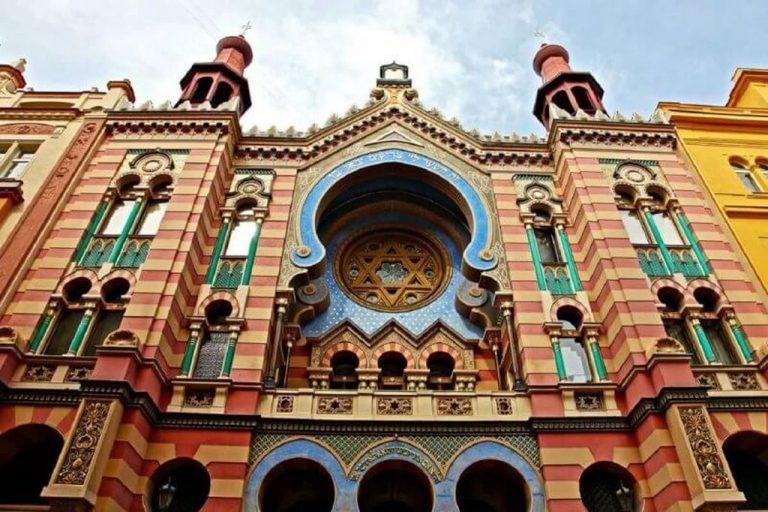
In 1905-1908, the largest synagogue in Prague was built – Jerusalem (Jubilee). It is located next to the Jewish quarter, but already beyond, not far from the Main Railway Station in Prague. You can find the Jerusalem synagogue at Jeruzalémská 1310/7, 110 00, Prague 1.
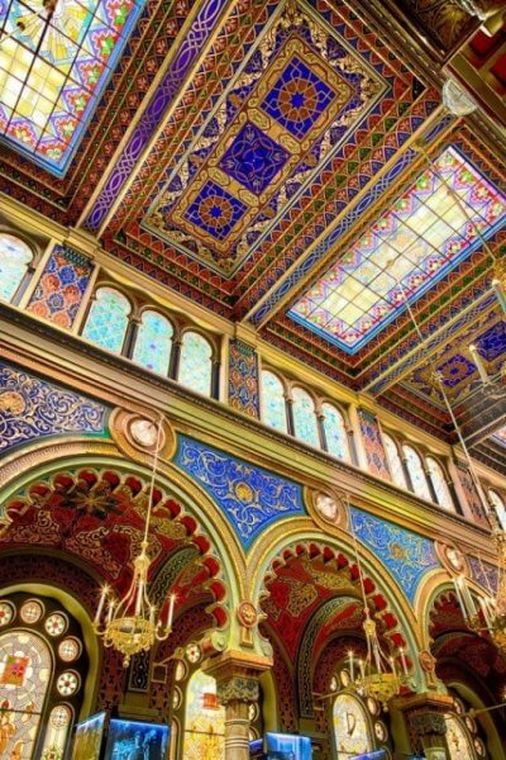
The internal layout of this synagogue is very different from most Jewish prayer houses. Lighting, too, was not done according to Jewish canons: stained-glass windows are located on the ceiling.
The interior is extremely beautiful and rich. The walls are painted with intricate ornaments in terracotta and blue tones, with an abundance of gold colors.
- The Jerusalem synagogue is open for tourists from April to October (inclusive) on all days except Saturdays and Jewish holidays.
- Opening hours: from 11:00 to 17:00.
Admission Ticket Price:
- for adults 100 kroons;
- for pupils and students up to 26 years old – 60 kroons.
The Jewish quarter in Prague is a great place not only in terms of attractions, but also in terms of walks. It is pleasant to walk along this attractive piece of Prague both in the afternoon and in the quiet evening.
Walk in the Jewish quarter of Prague:
